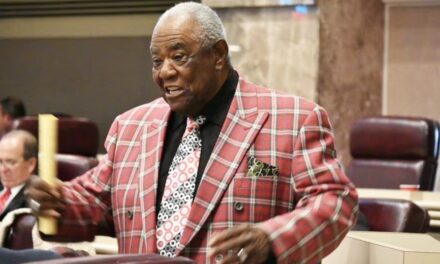By Ryan Coleman
We must have a proactive and innovative plan to enhance communities in Baltimore County like Randallstown, Woodlawn, Windsor Mill, Winters Lane, Campfield, East Towson, Overlea, Owings Mills, Rosedale, Lochearn and Turners Station. The plan must account for and address structural racism.
The structural racism can be defined as the “overarching system of racial bias across institutions and society. These systems give privileges to White people resulting in disadvantages to people of color.” Understanding how racism is built into various social structures and quantifying its long-term effects is fundamental to the anti-racist work of dismantling these barriers.
Many of the disparities between Black and White communities in the United States are an outgrowth of a long history of discriminatory and dehumanizing laws and policies that have created and exacerbated inequality in almost every sphere of life.
These laws and policies are built into the fundamental structures of our societies—our systems of labor, housing, education, voting, healthcare and justice. They are deeply entrenched, intertwined, and insidious, and they form the foundation for structural racism.
This piece will only discuss how housing is being used to further structural racism.
Housing policy and practices excluded Black families from opportunities to build home equity and accumulate wealth, creating generational repercussions. In contrast, federal intervention and investment has helped expand homeownership and affordable housing for countless White families.
We continue to find that homes in Black neighborhoods are valued roughly 21 percent to 23 percent below what their valuations would be in non-Black neighborhoods. My conclusion is that at least 15 percent of homes are at risk of under-appraisal in majority-Black neighborhoods, and this has a modest but meaningful effect on overall valuations and final sales prices—limiting wealth accumulation for homeowners in majority-Black neighborhoods. It also allows the over saturation of group homes, and Section 8. Housing inequality is a primary culprit behind the large racial wealth gap between Black and white households in the U.S.
Mobilizing public and political will to craft and implement remedies necessary for a more just future is critical to rectifying the years of unjust housing policies that continue to impact families today.
The Baltimore County Council can pass the following legislation to help stabilize black communities in Baltimore County:
1. Increase opportunities for Black homeownership
To start, we must set a goal of closing the Black homeownership gap in Baltimore County by:
- Increasing access to down payment assistance. Discriminatory policies that have excluded Black families from homeownership, education and job opportunities often leave Black parents with less wealth to pass on to their children.
- Increasing access to affordable credit. Given the history of redlining and discriminatory lending in Baltimore County, we must extend mortgage and business credit to underserved, minority home buyers and communities.
- Investing in affordable homeownership. Even when down payment assistance is available, unaffordable home prices remain a major obstacle to homeownership. Expanding government grants that finance affordable home construction can help builders create lasting, sustainable homeownership opportunities.
2. Invest in distressed, racially segregated communities
Many formerly redlined and segregated neighborhoods continue to suffer from disinvestment and economic distress. This makes our communities food deserts and limits the type of stores that black residents want. Reinvestment and tax incentives targeting these communities would help spark recovery and opportunities. The new County Executive and the Baltimore County Council must come up with a strategic plan to tackle racial disparities in homeownership and asset -building, and to improve neighborhood investment.
3. Stop perpetuating segregation
Today’s economically exclusionary zoning perpetuates this segregation. Baltimore County must be obligated to increase opportunities for Black households to live in neighborhoods with good schools and safe streets. The Baltimore County Council can do this by:
- Reforming zoning to allow mixed-income communities. By diversifying the types of homes allowed in their communities, Baltimore County can make them more racially and economically inclusive.
- Building and preserving affordable homes in communities of opportunity. Zoning reforms are necessary but often insufficient alone — governments must also
increase investments in affordable homes in non-segregated communities.
- Incentivizing mixed-income housing developments and making public land in well-resourced neighborhoods available at low cost for intentionally affordable homes.
- Create legislation to limit the over saturation of group homes, and vouchers.
4. Invest in affordable rental housing
The Baltimore County Council must create rent control legislation that sets price controls on the rent as a price ceiling. The rent control legislation must include:
- “Strict price ceilings”, also known as “rent freeze” systems, or “absolute” or “first generation” rent controls, in which no increases in rent are allowed at all.
- “Strict” or “strong” rent control, in which the rental price can rise but continues to be regulated in between tenancies.
- “Tenancy” or “second-generation” rent control, which limits price increases during a tenancy.
5. Minimize the damage on Black households
A crucial, immediate step for remedying racial housing disparities is preventing eviction and foreclosure. On average, Black renters and homeowners are at higher risk of losing their homes, having entered the health and economic crisis with less access to stable and affordable homes. Eviction legislation and foreclosure moratoria as well as forbearance options are critical for stabilizing households. Foreclosure prevention assistance targeting low-income and middle income homeowners, emergency financial assistance for renters facing eviction, and extended repayment options for renters.
The post Why Black neighborhoods continue to struggle in Baltimore County appeared first on AFRO American Newspapers.










